Today we’re talking about something we haven’t covered before and that’s health and skin problems associated with mold exposure.
Mold exposure can lead to a number of symptoms. Some of the early warning signs show up on the skin and include acne, hives, dermatitis, other rashes. And there can be other symptoms such as fatigue, weight gain, brain fog, memory loss, unexplained pain and a number of other symptoms. If you have these or other symptoms and you haven’t been able to get to the root cause, your answer may be in this podcast.
My guest today is Dr. Jill Carnahan. Dr. Jill received her medical degree from Loyola University Stritch School of Medicine. She is double board-certified in Family Medicine (ABFM) and Integrative Holistic Medicine (ABIHM). Dr. Jill was part of the first 100+ health-care practitioners to be certified in Functional Medicine through the Institute of Functional Medicine (IFMCP). She founded Flatiron Functional Medicine in Boulder, Colorado where she partnered in functional medicine with Dr. Robert Rountree. She recently opened a new medical clinic in Louisville, Colorado. Dr. Jill is a 15-year survivor of breast cancer and Crohn’s disease and is passionate about teaching patients how to “live well” and thrive in the midst of complex and chronic illness. She is also committed to teaching other physicians how to address underlying causes of illness rather than just treating symptoms.
On today’s podcast, we talk with Dr. Jill Carnahan about how to know if mold exposure may be an issue for you and what to do about it. Dr. Jill covers testing and valuable resources that I think you’ll be interested to hear about. Many of the symptoms of mold exposure can be misdiagnosed with other health conditions, so it’s important to know what to look for because it may be the missing piece for your health.
According to Dr. Jill, there is a surprising link between mold exposure and adult acne. If you’ve been struggling with persistent cystic acne that seems unaffected by traditional remedies, it might be time to explore the connection with C4A, a crucial component of the immune system activated during mold exposure. Unlike hormonal acne, addressing mold exposure could be the key to clearer skin. Dr. Jill delves into how mold triggers histamine reactions, leading to issues like hives and dermatitis. From scalp irritation to rashes in warm areas of the body, your skin’s health is intricately connected to your environment.
So please enjoy this interview…
I hope you enjoyed this interview today with Dr. Jill Carnahan
To learn more about Dr. Jill, visit her website here.
And here are the other links and resources she mentioned during her interview:
Her blog post on mold
Mast Cell/skin issues related to CiRS
ERMI and HERTSMI II testing
Biotoxin CIRS Labs
Dr. Shoemaker Resources
Also, I invite you to join the The Spa Dr. community here or subscribe to the podcast on iTunes so you don’t miss our upcoming shows. If you have not done so already, I highly recommend that you get your customized skin profile here. It’s free – Based upon your answers, it will give you great tips for glowing skin and vibrant health.
Also don’t miss out on all of the latest tips to get glowing healthy skin from the inside and out, be sure to follow me on Facebook, Pinterest and Twitter. And join the conversation!
Thank you and we’ll see you next time.
TRANSCRIPTION
| Trevor: | Hi there. I’m Doctor Trevor Cates. Welcome to the Spa Doctor podcast. Today we’re talking about something we haven’t covered before on the Spa Doctor podcast and that’s the health and skin problems associated with mold exposure. Mold exposure can lead to a number of symptoms. Some of the early warning signs can show up on the skin and these can include acne, hives, dermatitis and other rashes and there could be other symptoms like fatigue, weight gain, brain fog, memory loss and unexplained pain and a number of other symptoms. If you have any of these skin or other symptoms and you haven’t been able to get to the root cause, your answer maybe in this podcast. |
| My guest today is Doctor Jill Carnahan. Doctor Jill received her medical degree from Loyola University, Stritch School of Medicine. She is double board certified in family medicine and integrative holistic medicine. Doctor Jill was part of the first group of healthcare practitioners to be certified in functional medicine through the Institute of Functional Medicine. She founded Flat Iron Functional Medicine in Boulder, Colorado where she partnered in functional medicine with Doctor Robert Roundtree. She recently opened a new medical clinic in Louisville, Colorado. | |
| Doctor Jill is a fifteen year survival of breast cancer and Crohns Disease and is passionate about teaching patients how to live well and thrive in the midst of complex and chronic illness. She’s committed to teaching other physicians how to address underlying causes of illness rather than treating symptoms. She helps both patients and other physicians. | |
| On today’s podcast, we cover how to know if mold exposure may be an issue for you and what you can do about it. Doctor Jill covers specifics like testing and valuable resources that I think you’ll be really interested to hear about whether or not you think mold is an issue for you and your health, I think this is going to be really interesting for you. Many of the symptoms of mold exposure can be miss diagnosed as other health conditions so it’s important to know what to look for because it may be the missing piece for your health. Please enjoy this interview. Doctor Jill, it’s great to have you on my podcast. | |
| Jill: | Thank you for having me. I’m excited to be here. |
| Trevor: | Yeah. Let’s start off with you and how you got interested in functional medicine. |
| Jill: | Absolutely. I had always wanted to go into a healing profession and I didn’t know if it was going to be physical therapy or chiropractic and my heart and mind has always been much more natural, alternative medicine so I wanted to get to root cause. I wanted to do nutrition and teach patients to live well and what ended up happening is I did an undergraduate degree that would allow me to do any kind of health profession and then looked at the different schools. |
| What I realised was, I probably had the best chance of changing elepathic model by going into it and actually coming from the inside out and making some changes. I feel like it was a great way to go to get a medical degree because obviously the system is really set up for that but my heart has always been much more root cause oriented than that. I ended up going to medical school at Loyola and then during my medical school training in my third year, a lot of people have heard my story but I was diagnosed at twenty five with breast cancer. | |
| For your listeners who don’t know, it’s a disease in young women so it’s a whole different ball game than for the fifty five year old woman who gets a tumor that’s very slow growing. I took a leave of absence from medical school and took everything I had, my social network and prayer and meditation and all of that stuff and then I had surgery. I had radiation, I had three drug chemotherapy. Lost all my hair, was very, very sick from that but I recovered and I beat the breast cancer. That was definitely a catalyst because it was during that time that I learned the term functional medicine. | |
| I’d always wanted to do that, I just didn’t know what it was called so it was pretty exciting to learn there was a name and a group that was already, that was of course led by Jeff Bland in the old days. I really started attaching myself to that and learning everything I could about nutrition and wellness and functional medicine and I really feel that the chemotherapy, the drugs, all of that helped me recover at that time because it was so aggressive but for the last sixteen years, the health that I have today is because of functional medicine and the recovery from all of that toxic therapy that was essential but still very, very toxic. | |
| Trevor: | Yeah. For treating the breast cancer, you used a conventional medical approach but then recovering from that, you learned about functional medicine and how to support the body and kind of get your body back to a healthy state, right? |
| Jill: | Exactly, exactly because that stuff is so toxic and it’s absolutely necessary for survival. I never have regretted the fact that I did it but I was very, very traumatized and sick from the therapy itself, from multiple surgeries, radiation, chemotherapy, lost all my hair. It was a definite recovery and I’m totally grateful to functional medicine for that in the interim. |
| Trevor: | Like you said, breast cancer, getting breast cancer in your twenties is different than in your forties or fifties or later. It’s much more aggressive and so having the approach that you took is probably the one that you needed to do. It sounds like your healthy now and you look like it was maybe just five years ago but I think you’re probably older than thirty. |
| Jill: | Yeah. |
| Trevor: | Okay. Something in particular I wanted us to cover today is the chronic inflammatory response syndrome. Tell us about how you got interested in that and I want to talk a lot about mold related symptoms today and mold related illness. |
| Jill: | Absolutely. This is an area that until I had a personal encounter with a mold related illness, even as a functional medicine practitioner for the last fifteen years, I did not realize the amount of patients who have this and the amount of things that can masquerade as what we call CIRS. It’s called chronic inflammatory response syndrome. The basics are this, there’s about twenty four percent of the population who has the genetics. It’s HLA types and HLA’s are basically our little pacman in the immune system that sample the things that come into our gut or environment or on our skin or in our lungs and those genetics tell our body what’s foreign, what’s bad and dangerous and what’s not. |
| For the people of the twenty four percent of we call the canaries that are very susceptible to mold related illness, they have trouble distinguishing this bad toxin from something that’s normal. Their body isn’t able to tag it well and therefore, they accumulate these toxins in their body and it sets off their immune system. It’s like you throw the gasoline on the camp fire and then you throw a match in it and it explodes with the flames and that’s what happens in their immune system. It’s almost like that trigger, that toxin, we call them bio toxins and they can be from fish or from Lyme or from mold which is probably the most common. | |
| That triggers their immune system to kind of go crazy and that immune system response is actually what makes them sick, not the toxin itself. The toxin is the match that lights the fire in the immune system and then the immune system releases cytokines and does collateral damage to tissues and effects the endocrine system. We can go into the details but it’s amazing how far reaching and how many systems. I would venture to say that nearly every system in the body is affected by mold in someone whose genetically susceptible but the foundation is that genetic susceptibility because the other seventy six percent of the population can get exposed to mold. They might sneeze or have a little congestion but they’re not going to get this immune illness as the other people. | |
| Trevor: | That’s a really interesting thing because I know that, you think of mold and you’re like, okay, naturally it grows. It’s not something made by man necessarily, it can be, but it does grow and in the right environment and so it’s natural. Why is it that something that nature creates, how could that be so toxic? What you’re talking about is that it’s not necessarily toxic for everyone, but for those people that have that genetic predisposition. How do people know if they have that genetic issue? |
| Jill: | Yeah. This is a simple blood test that can be done through Lab Corps and it’s called HLADR typing. Doctor Shoemaker who was the original researcher on CIRS has the Rosetta Stone on his website, SurvivingMold.com and so you can go there and see if your genes link up. This test is also now available to the public without a doctor’s order, through Life Extension. That’s a really neat thing now because it was, if you go through insurance, it could be a couple thousand dollars and of course, the insurance will discount it but nowadays a patient can order directly through Life Extension, HLA, mold typing, get their results themselves and I think it’s only a couple hundred dollars. |
| Trevor: | Okay, great. It’s a great tool. I think when people hear the word mold, they think, okay, this is for people who live on the coast, that live in a beach town where there’s a lot of moisture in the air or a very humid environment like New Orleans or something but we know, mold grows across the country. It grows around the world really. Do you feel like it’s a location based thing? |
| Jill: | No. I think there can be mold almost anywhere. You know, there’s a lot of people who are looking for a safe house or a safe place and there’s certainly areas that are more dry and more likely to be safe and especially outdoors. When you go inside the walls of a building, especially now with all the environmental controls, where there’s less airflow from inside to outside, it tends to be a much more toxic environment. A lot of people could live in a tent in a campground and might be okay whereas in a house, they wouldn’t. |
| Back to environments, certainly you would think like Arizona and New Mexico, our states of Utah and Colorado, would all be good but there’s still flooding. We had a flood in Boulder about two or three years ago in 2013 and that really devastated so many of the buildings because they got water intrusion. That’s the core is water intrusion. Obviously, even in dry climates, you can have water intrusion, a leak from the roof or you can have condensation. In some of the real hot climates, you’ll have condensation because of the heat change from the air conditioning inside to outside. That condensation alone can cause mold issues. Certainly areas like Hawaii, Miami Florida, there’s definitely more humid areas that have a lot more issues with mold but what happens is really any building that’s airtight and has a mold issue can be a problem no matter what the climate. | |
| Trevor: | Many of our homes are airtight because of the newer construction and winter time, we want our homes to stay warm and be energy efficient and so they’re really well sealed but the problem is that this is getting trapped in our homes. What are the kinds of things to look for? What are some of the common symptoms? |
| Jill: | Yeah. There’s a cluster analysis which we look at, sets of symptoms that have been studied and if you have eight or more of the clusters, there’s thirteen of them, you’re considered positive for CIRS. I’ll just name a few because if people hear them, they might recognize some symptoms or especially the unique ones that they might have. Fatigue is probably number one and obviously that can masquerade. It could be chronic fatigue, it could be fibromyalgia. There could be a lot of other diseases besides mold but there are a sub set of genetic canaries that have a gene 4353 and that one is very susceptible to fatigue related illness and depression. |
| Fatigue is number one. Word finding memory issues are really, really common. Weakness, achiness in the joints, like morning stiffness. Headaches are common. Difficulty with new knowledge assimilation so they might be reading something over and over again and they can’t comprehend it whereas just a year before, they were able to read very quickly. Concentration problems which go right along with we mentioned morning stiffness and joint pain which are real common. Unusual skin sensations, so numbness and tingling of the hands or feet can be common. | |
| Shortness of breath, sinus congestion, nasal drainage, cough, increased thirst and increased urination. This is because the hormone, anti diuretic hormone or Vasopressin is effected in the pituitary and so these patients often have no regulation of hydration. They drink and they pee and they drink and they pee and their body doesn’t signal them to hold onto the water to keep their volume up and they’ll be low blood pressure. They’ll have fainting or dizziness and they’ll often drink and drink and pee and pee and they can’t stay hydrated. | |
| Appetite swings are real common. One very unique thing is patients in a moldy environment often will develop lepton resistance and because of that, they can gain thirty, fifty pounds in a very short period of time with no change in diet or exercise and you can imagine how terrifying that is to a patient to suddenly have this massive amount of weight gain. It’s less frequent to have weight loss but that can also occur. Then the typical red eyes, blurry vision, changes in vision, difficult night vision, night sweats are very common. One really unusual thing is what we call ice pick pain and that would be where they just describe it as a very sharp, like a knife going through their head and this is very common with mold and not to common with other illnesses. | |
| Abdominal pain, so low MSH which is part of this illness affects the permeability of the gut and I’m sure you’ve had guests talk about intestinal permeability and gluten sensitivity and all of that and because mold is such a toxin to the tight junctions in the gut, we often have very much increased permeability. All of the sudden they’ll develop new food sensitivities and even patients who don’t have celiac disease will suddenly have a very adverse reaction to gluten. It really affects the gut and the permeability. Vertigo, I mentioned spinning sensation. Light headness, dizziness and then another one that’s very unique is electric or static shocks. | |
| You know when you’re padding around in your socks in the winter and you touch a light switch and you have a shock, these people all year round, summer and winter, they will have static shocks. Because of that, they’ll often break watches or break electronics. They literally, because of that low ADH, they have volume depletion in the body and they’re sweating out salt on the surface of their skin and because of that, they will often literally create a battery on the surface of their skin and things like computers that they touch or watches that they wear, they will break. That’s really interesting. | |
| Trevor: | Wow. Now there are some interesting symptoms that you mentioned in there that are probably disregarded by a conventional medical doctors as just, “That’s just in your head,” or something like that. Then there are other things that have probably been diagnosed as something else, like chronic fatigue syndrome or menopause if you talk about night sweats or maybe even Alzheimer’s or dementia because of the memory loss and difficulty focusing. Diabetes because of the thirst and not being hydrated or the weight gain. When it comes to skin symptoms, are there any specific things that people should be looking for? |
| Jill: | So glad you asked because adult acne, I mean how many people have that and are so frustrated? C4A which is a big driver of the immune system in mold exposure will cause cystic acne and nothing will help and it’s not related to hormones so taking care of that mold exposure will help. Hives, which is a histamine reaction. Mold causes mass cells to be very reactive and produce excess histamine and this hive reaction in typical like [inaudible 00:15:43] where you get a line if you pull a pencil across the skin, those are real common to and that’s all histamine related. Then things like just dermatitis on the scalp or irritation under any warm areas of the body, like in the folds of the skin and things, rashes are common. The skin is a major organ. |
| Trevor: | Do you find that this is one of the first places it shows up or is this later down the road? |
| Jill: | If we include like red eyes, irritated eyes, itching, scalp irritations, rashes, hives, acne, yes, yes. I’d say it’s commonly right off the bat. |
| Trevor: | Do you see a lot of people in your practice that have been given other diagnoses and not gotten any improvement from the treatment and that’s how they come in and find out? |
| Jill: | I’m so glad you brought that up because that is probably the most common scenario that I see. A couple things, SIBO, small intestinal bacterial overgrowth, super common. It’s another name for IBS in many cases, so the typical gas and bloating and diarrhea. Very frequently these patients have mold exposure or toxin exposure on top of that. Things like dementia. Doctor Dale Bredisen presented some research, a brilliant researcher who does Alzheimer’s research, and his research was on young patients like fifties and sixties who developed dementia. |
| What he did was he applied this CIRS protocol, the Shoemaker protocol, to the CIRS related illness in these patients who qualified and over thirty percent, one in three, had reversal of their dementia. This is just absolutely profound because he realized there was a connection in his dementia patients, especially the early onset so these younger people, fifty five year old female lawyer who all the sudden, boom, she can’t read the cases. She can’t keep up, she’s having memory difficult, she’s losing her keys and he would identify those subset that had CIRS, treat them and that dementia reversed. | |
| This is just so profound. It’s been taking the functional medicine world by storm because to reverse Alzheimer’s dementia is pretty cool. That, and then you mentioned chronic fatigue, fibromyalgia, super common. The pain syndromes, the fatigue syndromes, very commonly is a bio toxin related illness. What’s exciting is the typical chronic fatigue may be incurable although with functional medicine, if we find the root cause, we can treat it but with CIRS, it’s treatable. If patients find that this is the underlying root cause, it’s very treatable and they can recover completely. | |
| Trevor: | Yeah, that’s amazing. What you mentioned about Alzheimer’s and dementia, I think about the elderly population and how a lot of people are in nursing homes, or retirement or assisted living facilities and if there was a mold issue in those facilities, then that could be a big part of what’s going on with people that are staying there. Let’s talk about how people can find out if there’s mold in their homes or where they live. |
| Jill: | Yes. This is a conundrum I face every single day in clinical practice because often, I’ll look at the lab work that I’ve drawn and I’ll see a pattern that makes me think this patient may be exposed to mold. Then I’ll have the conversation with them and say, “Do you think there’s any water damage? Have you had a roof that’s leaked? Have you had a window that condenses? Any floods in the basement? Do you have a crawl space? Do you have a walk out basement? There’s certain flat roof buildings like schools or offices that are flat roofed. |
| THere’s definitely certain patterns and things in building that you can ask about but the majority of patients, even if they have had a mold exposure, they’re like, “Nope, there’s no mold. No issues, I’m fine.” They may or may not notice a musty smell. A musty smell itself, if any of your listeners right now have an area where there’s a musty smell, that is VOC’s, volatile organic solvents from mold and it’s likely there’s an issue if you smell musty. If you go in the hotel room where you travel or you’re in an airport and you smell musty smells, you’re probably smelling mold but the bottom line which your question alluded to was how do you test? | |
| The first thing is just visual. Obviously, a patient themselves can look around and look for black spots on the ceiling. I know now when I go to a hotel room, the first thing I look for is the bathroom. I look up at the ceiling, I look in the corners, just make sure there’s no massive amounts of mold and you’d be surprised. Some of those hotels with the pools in the middle and the big atrium, if you look up at the ducts and stuff by the top, they are black with mold. I’m just cautious about that now that I’m aware so patients themselves can look and they can get an inspector to come take a look and inspectors have things like infrared cameras that can find moisture through walls. | |
| They can drill through the wall and actually take samples. They can of course do air sampling but the most common thing that I recommend for my patients to do themselves without an inspector is something called an Ermi test. It’s called Ermi and they can get that from micometrics.com. This is a dust sampling they can do of their home and it’s sent to the lab for DNA analysis of the types of molds that are in the dust in their home. | |
| Now, no test is perfect so even that can miss things or in someone who had really, really a lot of dust but no active mold issue, it could become false positive as well but that’s a great starting place because the patient themselves can order the test, do it themselves, send it in and get results and bring it in to me. Doctor Shoemaker has done research on these top five molds called Hertsmi2 and they’re based on research and those five molds, if you take and do the scoring, you can come up with a score from the Ermi test. | |
| I know there’s a lot of names but you basically get the Ermi test, do a Hertsmi score and the Hertsmi score is very valid if it’s greater than fifteen numbers, it is going to be 99 percent likely that that patient will not get well in that environment. It’s very, very statistically significant for a greater than fifteen score is pretty toxic to those sick patients. Less than eleven, it’s probably safe so that mid range is kind of up to negotiation but the numbers high and low really do have significance. I’ll often do that with my patients. | |
| Trevor: | Yeah. I just want to make sure people hear that just because they don’t see black on the walls or around the vents or you can’t smell it, it doesn’t mean it’s not there. It’s often times hidden behind walls, where in places where you can’t see it or it’s in the floors or in places where you don’t even see it. Especially in places like Utah and Colorado where you and I live, I don’t think you see as much of the visual mold as maybe other places where the environment’s more humid. The thing is, that first you want to see if you have this genetic issue or if you suspect that there’s mold in the house, I still think it’s good to find out and get that fixed but it’s important to get the genetic testing done too to see if that’s really going to effect your health. It’s important to do all of these things. |
| Jill: | Yeah, yeah. Because if someone doesn’t have the genes, then they’re very unlikely to get super sick from it so to me, that’s probably the number one test that I’ll do is to see are susceptible and just like you said, I would say, ninety five percent of people I suspect of mold have no idea and it’s not visible. I would also say, just so if patient’s have had this experience or your listeners, very frequently someone will get an inspector, “Hey, everything’s fine.” They’ll get a second inspector, “Everything’s fine.” They’ll get a third or fourth inspector and they’ll find a massive issue so if you suspect something, it’s sad because it’s expensive, it’s difficult but this is how this industry is and there are good people out there but not everybody is as good as the next person and so if you suspect something, keep going until you find it. |
| Trevor: | Yeah, absolutely. Then if someone finds that there is mold in their home, there are ways to treat that? There are people that can come in and fix those things and same thing, right? You want to have somebody that’s really good, that’s not going to just cover it up with some paint. |
| Jill: | Yes. Don’t throw bleach on it. For those susceptible individuals, a lot of people are like, “I just got some anti mold bleach and threw it on there.” What happens is as you kill the mold, the spores and the particles are released into the environment, even if it’s dead and in the genetically susceptible person, those dead mold particles are just as toxic as the live mold, maybe more so because they’re dispersed throughout the house. The worst thing someone can do is find a spot of mold, throw some bleach on it and say, “We’re done,” because they’ll continue to get ill. |
| Trevor: | Wow, that’s a good point, yeah. Do you feel like there’s certain types of mold that are toxic regardless of what people’s genetic predisposition is? Are there are some cases where it doesn’t matter if you don’t have the gene, you still want to be careful with the mold? |
| Jill: | Now that I’ve seen so many really sick patients with CIRS and obviously, most of them are the genetic susceptibility but usually their family members are effected in some way and sometimes it’s just allergies or congestion or lung issues or frequent illness is common. Their immune systems are not up to par but I would say yes. Things like Stachybotrys, the typical toxic black mold, very, very dangerous and it’s been shown in animal studies and children in Africa where they have moldy food supplies and all kinds of other studies where it really, really damages human health regardless of susceptibility. |
| Then the other thing I wanted to mention while we’re on this topic, Chaetomium and stachys, those are two big ones that are the most toxic I would say but the other thing I wanted to mention is one thing you started the interview with was homes and one of the things that’s really contributed to this is our paints. In the seventies, they decided to add an anti fungal element so pretty much paints that we buy for our home or inside of our home, outside, have an anti fungal and what that did was it created just like our antibiotics and the livestock, this creates fungal resistance and so the things that have survived are ten, a hundred times more toxic than they were before. | |
| A lot of people ask me, “Why is this such a big deal now? Why are we seeing so much more illness,” and it’s because the fungal species that we have are these hardy super bugs and they are nasty and they produce so many more toxins than they used to and so it really is a bigger issue than it used to be and we’ve kind of created it. | |
| Trevor: | Yeah. Thank you for explaining that. That’s something I never really thought about that but that does make sense, that to survive, the mold is going to have to be ultra resistant and ultra toxic unfortunately. Yeah and I’ve seen the black mold, these certain types of mold just take over peoples homes and they have to have either the homes taken down or extensive remodeling to get rid of that because it’s so toxic so it’s important for people to realize that it can be toxic to everybody. If someone knows that they have the genetic predisposition and they have symptoms, what is the treatment? |
| Jill: | Yeah. A doctor who understand CIRS will do a panel of lab tests. They may have them test the house so they’ll get enough data. They’ll just be collecting all that data and when they find enough data that they’re like, yeah, this person has CIRS. The very first thing is what we already talked about and that’s remediate or get the home fixed. Again, I’ve had patients who have both work and home exposures and one thing that I don’t take lightly is the financial impact of this disease because say your home is full of mold. You may have to sell it, you may have to move. You may not be able to sell it and patients deal with these difficult issues all the time. It’s never easy. |
| Years ago, part of why I am so familiar with this is my office building had a mold issue. I had to move and I literally left everything Trevor, I left everything and started over and of course that had a financial impact. For me, it was worth it because health is everything and you can’t buy health and so every penny I lost was worth it for my health but I had to deal with that and so how much more do my patients, whether it be deciding to leave a workplace because often if it’s a government employer or a school, these schools, these government employers are not always able to fix the problem so sometimes it means losing a job. | |
| Sometime it means losing a home, sometimes it means all of these things but back to treatment. Number one, you cannot hardly get well if you don’t get out of the exposure and that’s why I’m spending so much time on this. In some people, just by getting out of exposure will start to heal so that is just such a core thing. The second thing and I would say the second most profound is binders. Doctor Shoemaker has studied prescription binders cholestyramine and welchol and cholestyramine is quite a bit more effective but it’s really a pain to take. | |
| It’s a powder you mix with juice or some sort of liquid and it tastes terrible. It needs to be taken about four times a day, two hours away from food or supplements so it’s really a pain to take but it’s very, very effective. What that does is our liver will take these toxins and throw them out in the bile acids and the bile acids are how we eliminate through the gut toxic exposures, not just molds, micro toxins but other toxins as well. These particles are charged, cholestyramine and welchol and they’ll go in and they’ll grab onto the toxins from the bile, they’re bile acid binders and they’ll pull them out through the gut. | |
| These patients, little by little by little, this is aiding their detox. I always add things like sauna, dry brushing, Epsom salt baths, hydrotherapy, any sort of other therapy where they’re doing sweating, even just regular exercise can be beneficial because this is a toxic exposure and detoxification is really the core. The welchol is much more convenient. It’s tablets that can be taken once or twice a day. It’s very expensive and it is not as effective as cholestyramine but those patients who have gut issues like bloating or constipation, they won’t tolerate cholestyramine so then we use welchol. Now, in my practice, there’s not yet studies to back this up but I have found in clinical practice that clay and charcoal and other binders that are not prescription are very effective to and I often combine multiple binders for that patient to get well. | |
| Trevor: | Okay. That’s great. Do you have your own product that you make? |
| Jill: | I love the Dave’s Bulletproof Charcoal, the upgraded coconut charcoal. That’s very, very effective and then other patients have used Zeolite. I don’t use that frequently but I’ve heard from other practitioners that I can be effective and then things like Chlorella and Spirulina which are just good for heavy metals and other things can be helpful as well. |
| Trevor: | Perfect. What I would love to do is get links to these things from you so that I can share them on my website so people don’t have to be trying to figure out how to spell everything because I’m sure there’s some technical spelling on the websites and the tests and the treatments and things. Does that help support the immune system, are there other things that you do to help support the immune system with treatment? |
| Jill: | Yeah. Those are just the first two steps of treating CIRS and those are really the most important but after that, another thing that’s real important is we mentioned MSH, melanocyte stimulating hormone, frequently in CIRS patients, this is absent or totally very, very low and that is part of the direction of the pituitary for our endocrine system so our female, male hormones. It’s part of our thyroid, adrenal access and pituitary and so what happens when that MSH is low is all kinds of systems are effected and in order to raise the MSH, we have to do a swab in the nose on the patients and see if they’re colonized with a bacteria called MARCoNS. |
| This is a multi drug resistant organism that creates bio films and these bio films destroy MSH. It’s kind of a long, roundabout story but the key is that MSH will never recover and therefore, thyroid, adrenal, hormones, until you fix MSH and you get rid of the bug in the nose, so that’s the third step is checking the patient’s for MARCoNS and treating that. If they’re positive, it’s a prescription antibiotic nasal spray for four weeks and that usually takes care of the issue. | |
| Then you look at other labs and fix those as you go. Lots of other supportive things, just like we mentioned sauna and gentle exercise and supporting the gut, supporting the liver are really helpful in these patients as well. I did write an article including all of this information for patients so if you go to my blog, my website is just jillcarnahan.com and just google mold. There’s an article that kind of puts together what do you test for, what do you do, how can I find out if this is me and a lot of those links and tips are there. Then for other patients, we mentioned testing. | |
| Micometrics.com is a good place to start. You can find a good inspector and if you go to survivingmold.com, there’s a wealth of information about lab testing and resources for re-mediators and inspectors there and there’s lots of free content and then there’s some other things you can purchase from. I have no affiliation with the site but they have good resources there as well and again, that’s Doctor Shoemaker’s website so there’s lots of information. Thank you for having me, Trevor and thanks for all you do. I love your podcast. All you listeners, listen to every episode. They’re great. | |
| Trevor: | I hope you enjoyed this interview today with Doctor Jill Carnahan. To learn more about Doctor Jill, you can visit my website thespadoctor.com. Go to the podcast page with her interview and you’ll see all the information and links there. All the information that she talked about and the valuable resources and tests that she talked about today, you’ll see the links there. While you’re there, I also invite you to join the Spa Doctor community on my website or subscribe to the podcast on iTunes so you don’t miss any of our upcoming shows. |
| If you haven’t done so already, I highly recommend you get your own customized skin report at theskinquiz.com. It’s free and based upon the answers to just a few questions, you’ll get your own customized skin report. Just go to theskinquiz.com. Also, don’t miss out on the latest tips to get glowing, healthy skin from the inside and out. Be sure to follow me on Facebook, Pinterest, Instagram and Twitter and join the conversation. Thank you and I’ll see you next time on the Spa Doctor podcast. |
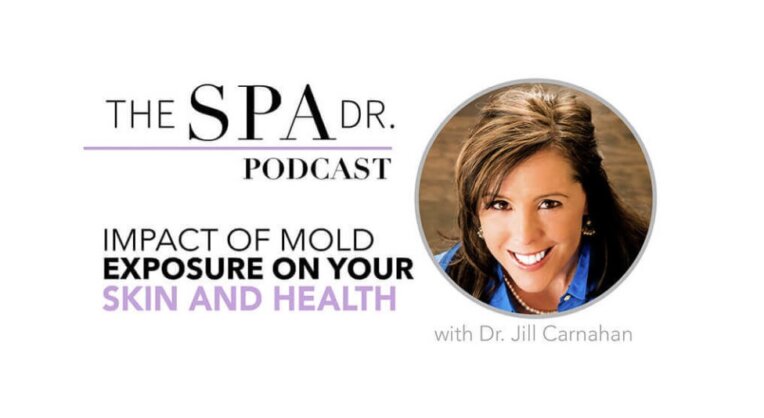

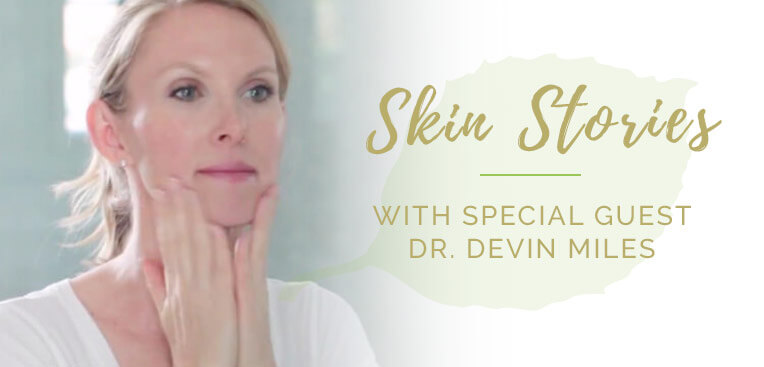
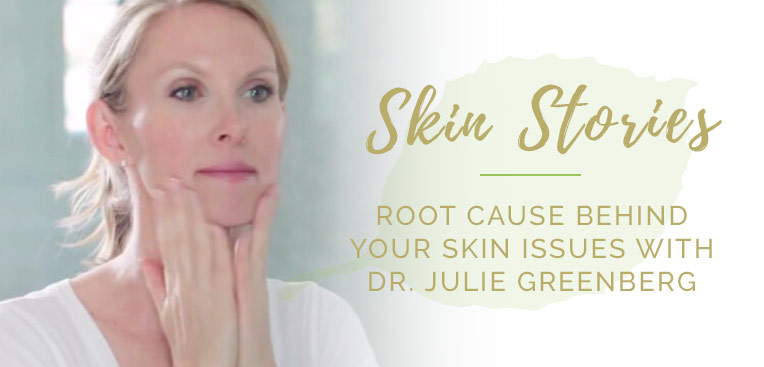

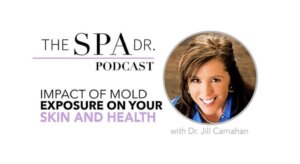
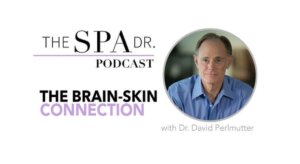

Reader Interactions